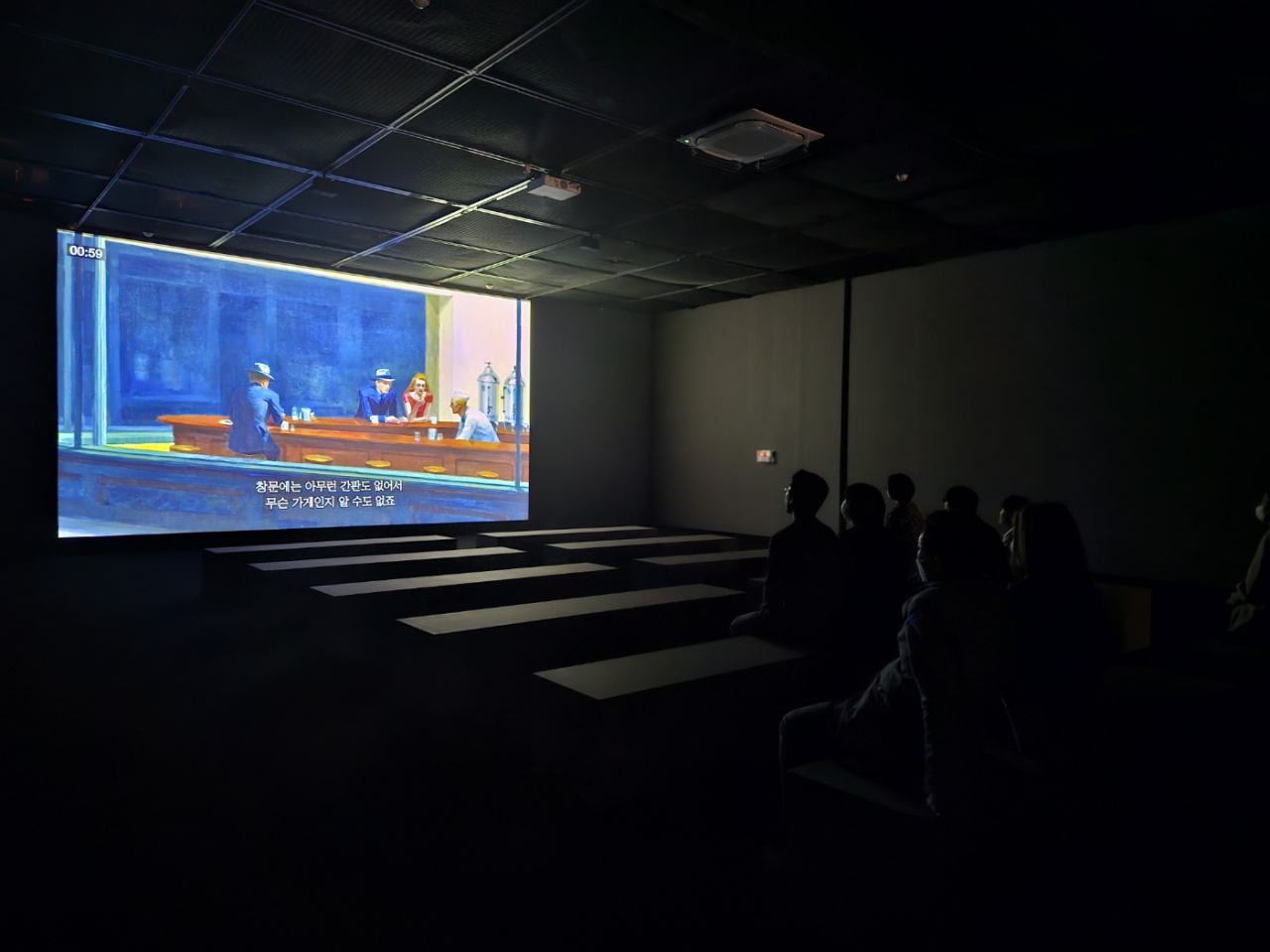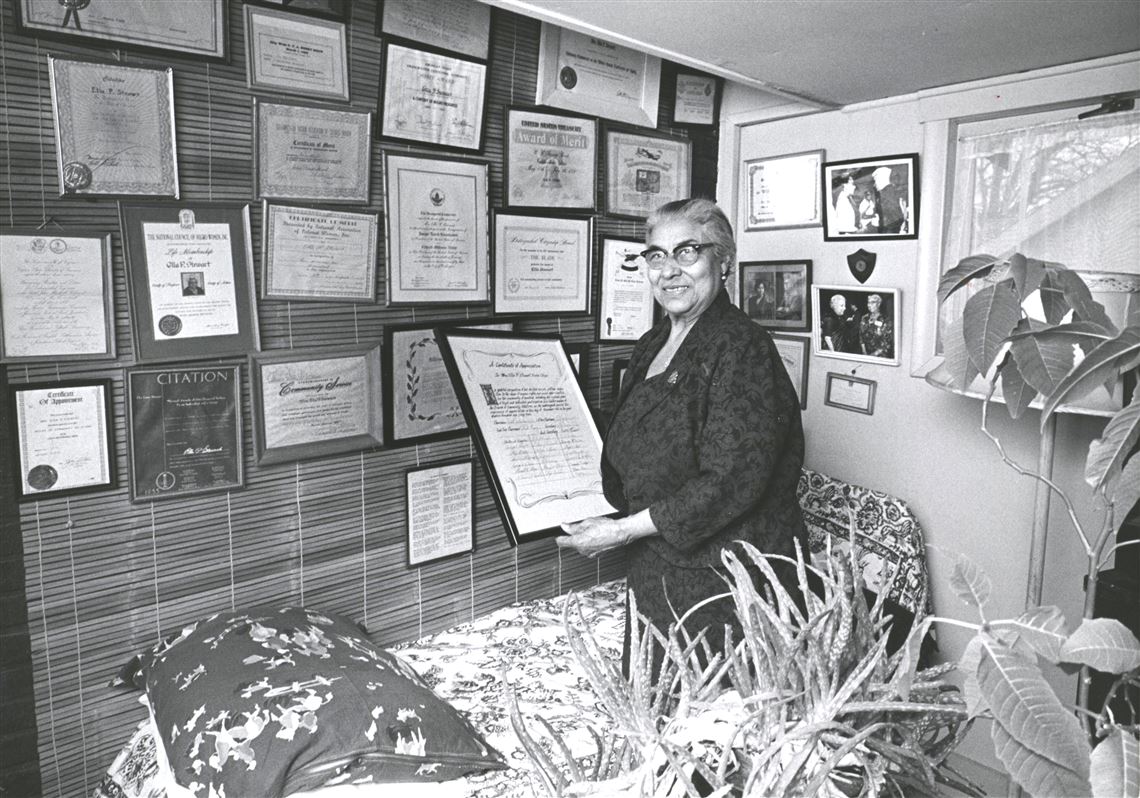HANNA WEBSTER
Pittsburgh Post-Gazette
hwebster@post-gazette.com
APR 23, 2023
Welcome to the initial installment of Forged in Pittsburgh, an occasional series about historic notables in Health.
Third-year Pitt pharmacy student Rena Reid was scrolling through Instagram when she came across a post highlighting historical Black women in her field.
The account spotlighted Ella P. Stewart, but Reid had never heard of her, although the 22-year-old often led tours of the Pitt School of Pharmacy and mentored prospective students. When she read in the post’s caption that Stewart was an alumni of the University of Pittsburgh, she was shocked.
“Not my U of Pitt!” she remembered thinking. “I was kind of offended that I heard about it from an outside source.”
Reid contacted Hailey Baxter, another third-year pharmacy student, to ask whether she knew of Stewart; Baxter had only recently read about her as well. The two set out to ensure the Stewart name survived more than 100 years after her own time on the Pitt campus.

A portrait honoring the late Ella P. Stewart by artist Douglas Webster now lives in Salk Hall on Pitt’s campus.(Pittsburgh Post-Gazette)
Ella Nora Phillips Stewart was the first Black woman to graduate from Pitt’s School of Pharmacy, in 1916, and she later opened the first Black-owned pharmacy in the region and became an international figure promoting race equality.
“Nobody handed her anything,” said Sadie Gee, Stewart’s niece, in an interview. “She earned it all. And I think that she was proud of herself, but she never bragged about it. You know, some people try to tell other people how great they are. But she was never like that. She was humble. She just went ahead and did what she had to do. She wouldn’t allow people to intimidate her.”
But as was the case with Margaret Hamilton, a computer scientist who wrote the code for the Apollo mission, and Rosalind Franklin, who helped capture the image Francis Crick used to “discover” the DNA double helix, history’s women are often eclipsed.
On March 21, the School of Pharmacy held a gathering in a room in Salk Hall to remember Ella P. Stewart. Reid and Baxter stood grinning in long dresses and white lab coats to honor the role model they had nearly overlooked.
“You will see future pharmacists grow in this room because of her legacy,” said pharmacy school Dean Amy Seybert, in a room henceforth known as the Ella P. Stewart Conference Room, with a hand-drawn portrait to seal the deal.
In the black-and-white drawing, done by artist Douglas Webster, who spoke at the ceremony, Stewart’s likeness was backdropped by depictions of Baxter’s handwritten school notes. March 21 was anointed Ella P. Stewart Day in Pittsburgh by Mayor Ed Gainey (who was represented by senior staffer Melvin El).
“What Ella Fitzgerald was to jazz, Ella Stewart was to pharmacy,” noted Anantha Shekhar, Pitt’s senior vice chancellor for the health sciences.
Ella Nora Phillips was born on a farm near Berryville, Va., on March 6, 1893. She was sent to Storer College in Harpers Ferry, W.Va., after grade school. Storer was founded in 1867 as an educational sanctuary for newly freed enslaved people. The missionary school taught Black and white students together; Stewart wrote that it offered liberal arts courses like home economics and music.

Pitt pharmacy students Rena Reid, left, and Hailey Baxter unveil a portrait honoring Ella P. Stewart on March 21.
(Pittsburgh Post-Gazette)
It was there she met her first husband, Charles Myers, with whom she’d have a daughter. On her way back to school in 1910, she got off a train in Pittsburgh to marry Myers. A 2010 story on Stewart, published through the Pitt School of Pharmacy, said this snap decision estranged her from her father for years.
Their daughter died of whooping cough, which led Stewart to pursue an activity to distract her from grief. She began working as a bookkeeper in Braddock and entered the School of Pharmacy in 1914. Stewart wrote, in an old document scrawled with her blue-pen cursive, that there were four women in her class, and that she was “the first Negro.”
She was originally told there was no space for her in the School of Pharmacy, according to the 2010 story, which also stated that white men were allotted the first row of seats in the classroom. White women were farther back, followed by Jewish students; the Black students used whatever resources were left.
Despite these obstacles, Stewart graduated with high marks in 1916, becoming the first Black woman to pass the Pennsylvania Board of Pharmacy exam and the first licensed Black woman pharmacist in the commonwealth.
She worked in Pittsburgh and then in Braddock, where she purchased a pharmacy. The pressure of the business ended her marriage with Charles. Returning home to Virginia in poor health, she asked a fellow Pitt pharmacy graduate, William “Doc” Stewart, to watch the shop while she was away. She and Stewart wed in 1920.

Ella P. Stewart, left, is surrounded by school children at the Ella P. Stewart Academy for Girls in an undated photo.(The Blade/Amy E. Voigt)
The couple realized that Toledo, Ohio, did not have a Black-owned drugstore. It was there, in the neighborhood of Lenk’s Hill, that they established Stewart’s pharmacy in 1922 and developed the top unit of the building as their living space, holding meetings with community members to discuss civil rights and leadership.
In a 1987 interview with archivist Anne Bowers, Stewart recalls how she came across the building that would become the landmark pharmacy.
“They were putting the for sale sign on,” she explained. “I went up and told them about what I wanted … I liked it very much because it had cement floors and a steel ceiling. It was a big building and it had nine rooms above the drugstore. I said then, I’d bring my husband over in a couple of days.”
Although the couple had opened the store in a predominantly white, German-American neighborhood, it didn’t stop business from flowing, as if a dam had burst.

Pharmacy student Hailey Baxter watches as a portrait honoring Ella P. Stewart is revealed March 21, 2023.(Pittsburgh Post-Gazette)
“We’d open the store and we had such a crowd out there that they were lined up on both sides, on the City Park side and Indiana side to get in,” she said in the interview. “We were busy all day long … People could hardly get around in the store for the many flowers that people had sent.”
After retiring from pharmacy in 1945, Stewart traveled the world, promoting racial understanding and civil rights. From 1948 to 1952, she was president of the National Association of Colored Women. She later became part of the National Advisory Committee on the White House Committee on Aging. According to the Toledo Blade, in 1951, President Dwight D. Eisenhower appointed her to the women’s advisory committee on U.S. Defense Manpower, now called the Defense Advisory Committee on Women in the Services.
In 1957, then-Virginia Gov. Thomas B. Stanley invited her and other notable Virginians to return for a dinner at the Jamestown Festival 350th Celebration, a commemoration of the colony’s founding. But the government rescinded her invitation — along with seven others — upon discovering that she was Black. Stanley described her as an “arch-foe of integration.”
Stewart responded with a letter, stating, “Well I won’t come, but I still have officially accepted your honor, and that honor is still mine.” Home in Toledo, the community held a 300-person dinner at a church for her, during which she was given a standing ovation and declared “citizen of the world.”
As she pursued racial equity, many other honors followed, including induction into the Ohio Women’s Hall of Fame and a seat on the UNESCO executive board. In 1961, an elementary school bore her name.
She valued education as a form of independence for Black people oppressed by structural forces and discrimination. Not only was she a monolith in breaking ground for others to follow in her footsteps, but she and her husband were, together, role models.
“She was really strong on education,” said Gee, Stewart’s niece, who is now 81 years old and lives in Reedville, Va. “She encouraged other people to work to get into schools. It didn’t matter whether they were going into pharmacy or not.”
Gee grew up in Arlington, Va.. Like her aunt, she was a trailblazer, too, working as an operating room nurse at a time when it was uncommon for Black women to be in the role.

Melvin El from the Pittsburgh Mayor's office delivers a proclamation at Pitt's Salk Hall, declaring March 21 as Ella P. Stewart Day.
(Pittsburgh Post-Gazette)
“I was the first [Black] person to be in the O.R. that did something other than clean,” she said. “I went through the problem of people not wanting a Black nurse.”
Stewart would visit her family throughout the year while she was traveling. While Gee said they weren’t close, she recalls those visits fondly, saying they’d spend a lot of time talking.
Gee remembers a question Stewart would always ask during her visits: “How are you doing with your education?”
In a 1958 letter concerning Stewart’s honorary membership in Phi Delta Kappa, a national educators sorority, Emory L. Leverette, a Toledo schools administrator, wrote, “Many boys and girls in the city of Toledo have gone into professional fields only because of the counseling and guidance of Mrs. Stewart … I know of no other person in the city of Toledo regardless of their profession, including our own teachers, who have done so much in creating an atmosphere for religious, intergroup and community relations.”
Once sick for two weeks in 1973 after a diverticulitis infection, Stewart wrote thanks to her friends for sending over 300 Christmas greetings and many “get well” cards, a variety of food (“cooked and uncooked,” she wrote), even a Philco color television.
Stewart died Nov. 27, 1987, at the age of 94. Just as when she fell ill, a slew of letters followed. In a Toledo Blade obituary by William Brower, with whom she had a 40-year friendship, the columnist wrote that the tenets of love and respect were sustained throughout Stewart’s life, as calls poured in to the newspaper.

Pitt pharmacy students Rena Reid, left, and Hailey Baxter smile between their speeches honoring Ella P. Stewart on March 21.
(Pittsburgh Post-Gazette)
It can be an insurmountable task to measure a legacy, but Stewart accumulated a mountain of accolades and gratitude during her life that might come close.
Decades later, her alma mater continued her penchant for stewardship. In 2000, the Department of Biological Sciences at Pitt handed out its initial Ella P. Stewart Award from Stewart’s estate in the form of a bookstore gift certificate to a first-year student. The department has given out the award every year since.
During last month’s room dedication, Shekhar, the senior vice chancellor, said that after a century of fighting, Black people still struggle against obstacles.
“We’re still having to fight for equity,” he said. “I want to take this as a call to action … I don’t want the next generation to be saying the same thing.”
Reid and Baxter are answering that call to action. Reid, who discovered Stewart through the Instagram post, was born in Jamaica, and her family moved to the suburbs of Rochester, N.Y., when she was 5. She was accustomed to a lack of representation growing up and noticed how her high school specifically elevated white students.
Baxter’s parents also were born in Jamaica. She grew up in Stroudsburg, Pa., a town of not more than 5,000 people, which has motivated her to serve rural populations in her career.

Anantha Shekhar, the senior vice chancellor for the health sciences at Pitt, honors the late Ella P. Stewart on March 21.(Pittsburgh Post-Gazette)
“I went from not knowing white people existed to only seeing white people everywhere,” Reid said during remarks she made at the March 21 gathering. “I was constantly comparing myself, asking questions like, ‘Why does my family have an accent,’ and ‘Why is my hair so hard to deal with?’ Unfortunately this is the story for many Black kids.”
Reid said she’s always been pulled toward helping people, especially Black communities. As a child, her parents called her Dr. Reid.
“Black women have had to fight to be seen,” Reid continued. “One way we can do this is by showing Black people winning. Ella Stewart is that person.”
Hanna Webster: hwebster@post-gazette.com
First Published April 23, 2023, 3:30am























